
7 STEPS TO INCREASE THE ROI OF YOUR LEARNING CONTENT - Brett Farmiloe, Founder and CEO, Terkel.io APRIL 2023 • Vol.10 • No.04 (ISSN 2564-2014) 24 15 30 35 “Engage Learners Through Personalized Learning Opportunities” Exclusive interview with Janice Burns, Chief People Officer, Degreed Learning Culture Must Be Embraced By Both Employees And Leaders Exclusive interview with Elaine Hunt, Global Head of Talent Development and Culture, Apex Group Ltd. Create A Culture Where Employees Are Comfortable Prioritizing L&D Exclusive interview with Natalie Dopp, Chief People Officer, HireVue 2023: The Year L&D Stops Trying To Emulate TikTok - Antoine Poincaré, The Climate School
(ISSN 2564-2014)
7 Steps To Increase The ROI Of Your Learning Content

Boost your workplace learning and development program’s ROI with seven methods
- Brett Farmiloe, Founder and CEO, Terkel.io
Articles
12 Employee Training And Upskilling: Retaining Productivity Amid High Turnover
Strategies for building an adaptable, diverse and equitable workforce through upskilling and job training - Connor Diemand-Yauman and Rebecca Taber Staehelin, Co-Founders and Co-CEOs, Merit America
19 Bridging The Workforce/Learning Divide In 2023 And Beyond
The role of industry awareness in skill development - Marie Gould Harper, Interim Provost, American Public University System
27 Revolutionizing Learning: The Digital Tools Transforming Employee Development
There is a large but unmet demand from employees to evolve their careers
- John Harrington Jr., Director, Product Marketing, Phenom
32 VR: Coming To A Workplace Near You
Embracing VR technology for remote work collaboration and employee training
- Ciara Mullarkey, Market Analyst, IDA Ireland
Employee Learning & Development Excellence APRIL 2023 Vol.10 No.04
Cover INDEX
07 On the
“Engage Learners Through Personalized Learning Opportunities”


Exclusive interview with Janice Burns, Chief People Officer, Degreed
Top Picks 15 24


Learning Culture Must Be Embraced By Both Employees And Leaders


Exclusive interview with Elaine Hunt, Global Head of Talent Development and Culture, Apex Group Ltd.
30
Create A Culture Where Employees Are Comfortable Prioritizing L&D

Exclusive interview with Natalie Dopp, Chief People Officer, HireVue
INDEX
2023: The Year L&D Stops Trying To Emulate TikTok

A look back at the idea that the next wave of B2B L&D content would come from bedroom creators - Antoine Poincaré, Vice President, The Climate School

How are our Employee Learning & Development
How are our Training & Development Products and Services helping to make you smarter?
Training & Development Excellence - Monthly Interactive Learning Journal
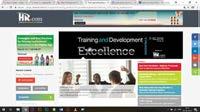
Employee Learning & Development Excellence - Monthly Interactive Learning Journal
This monthly interactive learning experience showcases effective, learner-centered technologies and content to facilitate the formal and informal transfer of the latest e-learning knowledge, information and skills in today’s workplace.
Training and Development Virtual Events
Employee Learning & Development - Virtual Events

Virtual events in the Training and Development track help you stay on top of the latest training, development and assessment techniques in order to maintain a competitive edge in the marketplace. Develop your skills, concepts, and attitude changes, and gain more knowledge to enhance performance. Training is crucial for organizational development and its success which is fruitful to both employers and employees of any organization. Some important benefits of training and development include: Increased productivity, Less supervision, Job satisfaction and Skills development. Each Virtual Event consists of up to 10 credit webcasts.
Virtual events in the Employee Learning and Development track help you stay on top of the latest training, development and assessment techniques in order to maintain a competitive edge in the marketplace. Develop your skills, concepts, and attitude changes, and gain more knowledge to enhance performance. Training is crucial for organizational development and its success which is fruitful to both employers and employees of any organization. Some important benefits of training and development include: Increased productivity, Less supervision, Job satisfaction and Skills development. Each Virtual Event consists of up to 10 credit webcasts.
Training and Development Webcasts for Credit
Employee Learning & Development - Webcasts for Credit
HR.com webcasts deliver the latest Training and Development industry news, research trends, best practices and case studies directly to your desktop. Webcasts are available live online with a downloadable podcast and a copy of the slides (PDF) available before and after each webcast. Earn all of the required recertification credits for aPHR, PHR, SPHR, GPHR, and SHRM Certifications. HR.com’s one-hour webcasts, in every HR specialty including HRIS and Payroll, are pre-approved for HRCI and SHRM credit (excluding Demo webcasts).
Training and Development Community
Employee Learning & Development - Community
Join almost 13,000 HR.com members with a similar interest and focus on Training and Development. Share content and download research reports, blogs, and articles, network, view educational webcasts, and “follow” peers and have them “follow” you in a social network platform to communicate regularly and stay on top of the latest updates. This well established Training and Development Community is an invaluable resource for any HR professional or manager.
Use these invaluable Training & Development resources today!
Employee Learning & Development
SEP 2017 Vol. 5 No. 09
For more information phone: 1.877.472.6648 | email: sales@hr.com | www.hr.com
Editorial Purpose
Our mission is to promote personal and professional development based on constructive values, sound ethics, and timeless principles.
Excellence Publications
Debbie McGrath CEO, HR.com - Publisher
Dawn Jeffers VP, Sales
Sue Kelley Director (Product, Marketing, and Research)
Babitha Balakrishnan and Deepa Damodaran Excellence Publications Managers and Editors
Employee Learning & Development Excellence Team
Deepa Damodaran Editor

Koushik Bharadhwaj Jr. Editor
Arun Kumar R Design and Layout (Digital Magazine)
Vibha Kini Magazine (Online Version)
Submissions & Correspondence
Please send any correspondence, articles, letters to the editor, and requests to reprint, republish, or excerpt articles to ePubEditors@hr.com
For customer service, or information on products and services, call 1-877-472-6648
Overcoming Learner Engagement and ROI Challenges in Today's Competitive Business Landscape
Intoday's competitive business landscape, organizations are constantly looking for ways to stay ahead of the curve. One key strategy to achieve this is to create a culture of continuous learning that supports the professional growth and development of their workforce.
While investing in employee development programs can yield significant returns, businesses often face challenges in ensuring learner engagement and measuring learner ROI.
Learner engagement challenges may include a lack of motivation or interest, limited access to training resources, and insufficient support from management. These challenges often lead to low completion rates and ultimately hinder the effectiveness of the training program.
Additionally, measuring learner ROI can be a complex process, particularly when trying to account for factors such as employee turnover and the long-term impact of training.
Despite the challenges organizations face in promoting learner engagement and measuring ROI, prioritizing these aspects is crucial for the success of their employee development initiatives.
This edition of Employee Learning & Development Excellence offers a selection of articles and interviews with L&D and HR experts, providing a comprehensive analysis of the current status of employee development programs in organizations. These thoughtprovoking pieces delve into what businesses need to do to further enhance their L&D initiatives and ensure a more effective and efficient workforce.
Employee Learning & Development Excellence (ISSN 2564-2014)
is published monthly by HR.com Limited, 56 Malone Road, Jacksons Point, Ontario L0E 1L0 Internet Address: www.hr.com
Featured on the cover, this month, is Terkel.io Founder and CEO, Brett Farmiloe's 7 Steps To Increase The ROI Of Your Learning Content, which outlines strategies for boosting workplace learning and development programs.
Additionally, you can learn from Degreed Chief People Officer Janice Burns, who, in an exclusive interview, shares the company's approach to talent engagement and retention through personalized learning and wellness benefits. In another interview, Elaine Hunt, Global Head of Talent Development and Culture at Apex Group Ltd., covers various topics, including learner engagement challenges, ROI measurement, and best practices for employee learning programs.

Also read Antoine Poincaré's thought-provoking piece, 2023: The Year L&D Stops Trying To Emulate TikTok that offers a unique perspective on the next wave of B2B L&D content creation.
That is not all!
In addition to the featured articles and interviews, this edition of Employee Learning & Development Excellence includes a range of insightful pieces. We hope that these articles provide answers to your questions about employee learning and development, and assist you in achieving excellence in your L&D initiatives.
Happy Reading!
information, or opinions
in the Excellence ePublications
those of HR.com and its employees. Under no circumstances shall HR.com or its partners or affiliates be responsible or liable for any indirect or incidental damages arising out of these opinions and content. EDITOR’S NOTE
Disclaimer: The views,
expressed
are solely those of the authors and do not necessarily represent
OR
©
No part of this publication may be reproduced or transmitted in any form without written permission from the publisher. Quotations must be credited.
For Advertising Opportunities, email: sales@hr.com Copyright
2023 HR.com.
Deepa Damodaran Editor, Employee Learning & Development Excellence
Subscribe now for $99 / year And get this magazine delivered to your inbox every month Become a Member Today to get it FREE! SIGN UP Write to the Editor at ePubEditors@hr.com
Debbie Mcgrath Publisher, HR.com
In a world of unparalleled challenges (global pandemic, racial injustice, political rivalry, digital 4.0, emotional malaise), uncertainty reigns. Finding opportunity in this context requires harnessing uncertainty and harnessing starts with reliable, valid, timely, and useful information. The Excellence publications are a superb source of such information. The authors provide insights with impact that will guide thought and action.
Dave Ulrich
Rensis Likert Professor, Ross School of Business, University of Michigan Partner, The RBL Group










Excellence publications are my ‘go-to’ resource for contemporary and actionable information to improve leadership, engagement, results, and retention. Each edition offers rich and diverse perspectives for improving the employee experience and the workplace in general.

 Julie Winkle Giulioni
Julie Winkle Giulioni


I regularly read and contribute to Leadership Excellence and Talent Management Excellence. I use many of the articles I read to augment my own presentations and I often share the articles with my clients. They are always quick, right on target for the latest issues in my field, and appreciated by my clients. If you want to stay up to date on the latest HR trends, choose a few of the different issues from the Excellence series of publications.

 Author, Virtual /Live Keynote Presenter, Inc.’s Top 100 Leadership Speakers
Author, Virtual /Live Keynote Presenter, Inc.’s Top 100 Leadership Speakers
WHY EXCELLENCE PUBLICATIONS?
Dr. Beverly Kaye CEO, BevKaye&Co.
We’re eager to hear your feedback on our magazines. Let us know your thoughts at ePubEditors@hr.com
7 Steps To Increase The ROI Of Your Learning Content

Boost your workplace learning and development program’s ROI with seven methods
By Brett Farmiloe, Terkel.io
From looking into all your available tools to creating accountability through visibility, here are seven answers to the question, “What are a few important steps that others can take to increase the return on investment (ROI) of their workplace learning and development programs?”
● Evaluate All Your Resources
● Track and Measure Program Progress
● Do Not Shy Away from Feedback
● Follow Up
● Align Training Initiatives with the Company Objectives
● Measure the Impact of Programs on Business Outcome
● Follow the Story
Employee Learning & Development Excellence presented by HR.com April 2023 7 Submit Your Articles
COVER ARTICLE
Evaluate All Your Resources
One of the most important steps in increasing the ROI of your learning and development programs is to evaluate all the available resources. Make sure you understand how the distinct elements – from instructors and facilitators, to content areas and subject matter experts, and technology platforms for =content delivery – are interconnected.

Identifying gaps can help you assess if additional resources are needed or if existing ones can be optimized or adjusted to make a more impactful experience for learners. This will also enable you to measure successes over time so that you can change the program as necessary based on evaluation results and feedback from learners themselves.
Track and Measure Program Progress
Human resources (HR) leaders can increase the ROI of their workplace learning and development programs by focusing on relevance and tailoring the training initiatives to the needs of their organization. This ensures that the training is more likely to provide tangible benefits, such as improved performance, productivity and morale.

Additionally, HR leaders should track and measure the progress of their training programs to ensure they are achieving their desired objectives.

Employee Learning & Development Excellence presented by HR.com April 2023 8 Submit Your Articles 7 Steps To Increase The ROI Of Your Learning Content
Travis Lindemoen, Managing Director, nexus IT group
Tawanda Johnson, HR and DEI Consultant, Sporting Smiles
Do Not Shy Away from Feedback


Want to increase the ROI of learning and development programs? Ask your employees what they need. Conducting surveys or focus groups to gather employee feedback is essential to design relevant and effective training programs that address specific needs and skills gaps. This approach can increase engagement, job satisfaction and retention rates as employees feel more invested in their career growth and development.
Gathering feedback is just the first step, though. Next, you have to also act on that feedback. By monitoring progress and impact, making data-driven decisions, and refining programs, you can create a culture of continuous learning that benefits both employees and the organization.
Follow Up
Require employees to use some aspects they have learned in the workplace over a specific period of time. Follow up through either a meeting, or individual feedback, or a survey to measure the value and ROI of the training. This will provide qualitative or quantitative data on whether the training should be used again.

Employee Learning & Development Excellence presented by HR.com April 2023 9 Submit Your Articles
Piotrek Sosnowski, Chief People and Culture Officer, natu.care
7 Steps To Increase The ROI Of Your Learning Content
Jarir Mallah, HR Specialist, Ling App
Align Training Initiatives with the Company Objectives

Aligning training activities with the overall business strategy is one step that others can take to improve the ROI of their workplace learning and development programs.
HR leaders can collaborate with other key stakeholders to determine the strategic goals and objectives of the organization and then create learning and development programs to support these objectives. This could involve identifying specific skills or knowledge gaps within the workforce that must be addressed to accomplish strategic objectives, and then implementing tailored training programs to fill these gaps.
By connecting learning and development programs with the overall business strategy, companies can ensure that training initiatives are targeted and effective, and ultimately contribute to achieving company objectives.
Measure the Impact of Programs on Business Outcome

To increase the ROI of workplace learning and development programs, HR leaders should measure and evaluate the impact of those programs on business outcomes.
By setting clear, measurable goals and using surveys, key performance indicators (KPIs), and other evaluation methods, HR leaders can optimize the program for maximum ROI. This helps to create a culture of continuous learning and improvement that benefits both employees and the organization as a whole.

Employee Learning & Development Excellence presented by HR.com April 2023 10 Submit Your Articles
Kimberley Tyler-Smith, VP, Strategy and Growth, Resume Worded
7 Steps To Increase The ROI Of Your Learning Content
Derek Bruce, Senior Director, Onsite First Aid Training
Follow the Story
Learning and development is a process, where often the results of the input (the learning) may not be immediately visible. At your next opportunity, consider working with one (or more) participants as they embark on a learning journey, intending to share their story as it unfolds.
Following the learning story creates accountability. Participants understand their role in realizing the investment, and the company takes on a more effective role in nurturing growth. There are additional benefits for both parties: participants gain recognition for their learning efforts and results, and companies show their commitment to learning and development.


Capturing learning stories can be as simple as a quick question and answer (Q&A) post on your intranet site, hosting a lunch-and-learn for the team, or convening a learning forum.
Brett Farmiloe is the Founder and CEO – and currently CHRO - of Terkel.io, Brett is a Society for Human Resource Management (SHRM) Influencer and has also been a keynote speaker at several state SHRM conferences around the topic of employee engagement.
Would you like to comment?

Employee Learning & Development Excellence presented by HR.com April 2023 11 Submit Your Articles 7 Steps To Increase The ROI Of Your Learning Content
Jennifer Lee, Coach, Up Front Coach
Employee Training And Upskilling: Retaining Productivity Amid High Turnover
By Connor Diemand-Yauman and Rebecca Taber Staehelin, Merit America
In the years since the pandemic, we have seen many attempts to understand the changing relationship between Americans and their work. From “The Great Resignation” to “quiet quitting,” workers are moving in and out of the workforce in unprecedented ways. Meanwhile, employers are struggling to meet the ever-changing worker preferences while balancing productivity.
Within this transforming job market (and the dizzying number of buzzwords we use to make sense of it), we also see transformation across the in-demand skills that allow employers to stay competitive. Upskilling employees is a critical factor in equipping and empowering employees to stay productive during the times of change. However, on its own, upskilling (read: terabytes of online content and one-off, optional workshops) is not enough. Leaders must nest their upskilling efforts within a broader strategic imperative to create an adaptable, diverse and equitable workforce.
Here are some key differences between upskilling programs that build stronger, more diverse teams in
times of change and those that collect dust on the shelves.
During employee turnover, employers often (and understandably) spread new responsibilities across their workforce to fill talent gaps. While this makes sense from a business continuity standpoint (just like ignoring a check engine light makes sense from a “driving continuity standpoint”), randomly doling out responsibilities can lead to worker frustration, low morale and lost productivity.
Just look at the trend of quiet hiring, where employers add responsibilities to workers’ plates without an increase in benefits, compensation, or incentives. But the risk of this path is often an irreparable loss in employee trust. Instead, proactive upskilling programs allow employees to be active participants in their skills development, surfacing the bottom-up interests and goals of employees with the top-down needs of the business. While harder to implement, this approach allows for a more enduring, thoughtful, and strategic expansion of employees’ roles that can endure for the long haul.
Employee Learning & Development Excellence presented by HR.com April 2023 12 Submit Your Articles
Strategies for building an adaptable, diverse and equitable workforce through upskilling and job training
Many employers focus their upskilling programs squarely on the technical skills required for a job. Do not get us wrong — this is important. But the most successful upskilling programs we have seen focus on additional wraparound skills like goal-setting, leadership, communication, and strategic decisionmaking. So instead of just offering upskilling programs focused on, for example, IT support, try blending that curriculum with something like team leadership. The result will not just prepare employees to meet the skill gaps de jour, but also to support their overarching career trajectory and wage growth.
Additionally, programs are more successful and effective when designed to meet employers where they are, with accessibility and flexibility in mind. For example, we know that Gen Z is on track to comprise a quarter of the workforce in the next two years, yet half of Gen Z workers feel that their college education
has left them feeling unprepared for the workforce.
This unique situation poses an opportunity for employers to create and build programs that can help close this gap, while meeting their own business needs. Interestingly, according to a survey conducted by Cengage, nearly all recent Gen Z graduates are open to pursuing online training if their employers cover the cost.
To best equip the emerging workforce for success and longevity at current companies and beyond, employers must be willing to understand the unique needs of their employees and help address gaps in specific skills, utilizing programs that are tailored to employees’ needs. These programs must also address lapses in accessibility and flexibility, such as providing tools, time and technology needed to complete programs comfortably.

Employee Learning & Development Excellence presented by HR.com April 2023 13 Submit Your Articles
Employee Training And Upskilling: Retaining Productivity Amid High Turnover
However, upskilling alone is not enough. Employers that want to stay competitive must also create pathways for stronger diversity, equity, and inclusion, as recent studies have found that DEI efforts are proven to boost productivity, retention and positive workplace environments. Upskilling programs with fast, flexible approaches coupled with strong DEI employer initiatives – especially ones that take an equity-first approach to hiring – create the ultimate pathway into new tech careers and provide a low-cost solution that can be adopted nationwide.
But upskilling is not the only way to give your organization a skills refresh. There are tens of millions of qualified workers with valuable skills, who are often overlooked. With this in mind, employers should not only engage in upskilling programs for current employees, they should also intentionally hire employees who come from non-college pathways – including boot camps, apprenticeships, and vocational, skills-based programs.
For many, this involves eliminating education requirements in favor of skills-based hiring to ease the time and effort spent on onboarding once an employee is hired. By focusing on skills over degrees,


employers can equitably expand and improve their chances of finding qualified candidates displaying the right competencies, instead of tapping into a talent pool that reflects just one standard of success.

Employers looking to stay competitive in this talent market must prioritize job training and upskilling as essential components of their workforce strategy, while expanding and diversifying their talent pipelines. With these programs and mindsets in place, employers can create a more inclusive workplace that is better equipped to adapt to changing job market demands and maintain success for the long haul.
Would you like to comment?
Employee Learning & Development Excellence presented by HR.com April 2023 14 Submit Your Articles
Connor Diemand-Yauman and Rebecca Taber Staehelin are the Co-Founders and Co-CEOs of Merit America
Employee Training And Upskilling: Retaining Productivity Amid High Turnover
“Engage Learners Through Personalized Learning Opportunities”
"Most employees, irrespective of industry or organization, spend, on average, only 24 minutes per week on learning. This is not enough to remain up to date with the changing skills needs, let alone prepare for the future. What is needed is consistent learning — through offering relevant learning opportunities, in manageable time chunks, with permission for people to learn during their workday and reinforcement/ accountability from their line managers," said Janice Burns, Chief People Officer, Degreed
Janice brings over three decades of professional experience as an educator, human capital strategist, diversity and inclusion advocate, HR business partner, learning innovator, and entrepreneur. In an exclusive interview with HR.com, she shares insights on how the company engages and retains talent through a range of personalized learning opportunities, autonomy, and wellness benefits. She also touches upon the company's approach to workforce management and how it allows for global talent recruitment and flexible work arrangements, among others.

Excerpts from the interview:
Q.In terms of workforce management and talent development, what are you doing to engage and retain talent in your company?
Janice: Offering learning opportunities that align with what people want to learn will enable them to develop skills they need to do their roles effectively. This is a powerful way to retain employees. It shows a level of commitment to their career progression and career goals, and our research has shown that 46% of employees will consider leaving an employer, who is not invested in their personal development.
The company offers various learning opportunities to employees to help them upskill for the future and remain with us for a long term. These include the Degreed learning platform, with pathways in everything from public speaking and leadership skills to product marketing and agile development.
Employee Learning & Development Excellence presented by HR.com April 2023 15 Submit Your Articles
Straight Talk with HR.com
TOP PICK
Q&A with Janice Burns, Chief People Officer, Degreed
We also offer a personal learning budget of $100 (or local equivalent) that employees can spend on any learning that interests them. Employees have spent this budget on a range of learning, including languages, guitar lessons, coaching, mental resilience training, and coding boot camps.
It is the flexibility and choice of this approach that stands out for our people. It gives them the power to shape their skills and the future stemming from this. We encourage and support our employees’ essential learning for their jobs, everyday learning for their careers, and deep skill learning that will help them transform and pursue other career possibilities.
Autonomy is incredibly important at Degreed. We are not prescriptive on how people should work, where, or when. As long as they are doing their work, we give them the freedom to fit it around their needs and other commitments. This also broadens our potential talent pool as we can hire the best talent globally, and also those who might otherwise not be able to work for us (like working parents, caretakers, and neurodiverse individuals) can adapt their schedules and work environments.
Finally, we recognize the importance of our people being mentally and physically healthy. We offer several wellness benefits to employees, ranging from a monthly wellness benefit ($75 or local equivalent) that people can spend on anything health and fitness related to a ‘Calm’ subscription. We also have ‘BrightBreaks’ to encourage employees to go for a break during the workday, and ‘Carrot’ that rewards employees for walking.
Q.What are the learning and development opportunities you offer to employees at your company?
Janice: The learning opportunities you get at Degreed are personalized and varied. It helps employees shape their learning to their needs, style, and goals. We offer a ‘personal learning budget’ that provides employees the freedom to choose what they want to learn.
The Degreed platform offers learning pathways and recommendations based on someone’s focus skills (a handful of skills that they choose to focus on for 3-6 months). They can also share content with others or create their own resources and pathways — managers and senior leaders often use this to upskill their teams in strategic skills important to their department’s goals.
Because of the partnerships we have with the likes of Ted@Work, Harvard Business Publishing, The Ken Blanchard Company, and Anders Pink, there is a wide variety of resources available to employees in various formats. Everyone learns differently, so having the option of reading about leadership, watching a video on public speaking, or completing a module on agile development helps to cater to individual preferences.
Plus, employees can stretch their skills through experiential learning opportunities recommended in the Degreed platform. These currently include ‘Client Education’, a 5-month stretch assignment, contributing thought leadership for our blog, and working with the professional services team on a temporary basis. This enables employees to learn more about other functions in the business and create new connections, as well as explore alternative career paths.
Employees can also match with mentors within Degreed based on their focus skills. Expert mentors are recommended when their skills align with a focus skill that a learner wants to develop. Additionally, employees, who participate in our diversity, equity, inclusion, and belonging (DEIB) business resource groups (BRGs), learn through casual company-wide events that focus on different topics, for e.g., “Leveraging Diversity in Product Design”. The BRGs also serve as a great mechanism for highlighting and showcasing hidden talent, while also providing leadership development opportunities for employees in individual contributor roles.
Employee Learning & Development Excellence presented by HR.com April 2023 16 Submit Your Articles
Straight Talk with HR.com
Q.What is the biggest challenge you face when it comes to learner engagement?

Janice: Like any organization, making time for learning is a constant challenge. Communicating regularly with the team and getting managers on board with learning can help with this. Our research found that most employees across different industries and organizations spend, on average, only 24 minutes per week on learning.
That is not enough to remain up to date with the changing skills needs, let alone prepare for the future. What is needed is consistent learning — through offering relevant learning opportunities, in manageable time chunks, with permission for people to learn during their workday and reinforcement/ accountability from their line managers.
Q.How do you engage learners in your development programs?
Janice: We engage our employees with learning and development by modeling it at a senior level and reinforcing how critical it is to our company mission.
Our internal communications and learning and development (L&D) teams work closely on initiatives to launch new learning programs and to highlight focus areas for the business. We build campaigns around new learning initiatives that are businesscritical, so employees find out about them via Slack and email, and at our company-all-hands meeting, if needed.
The Degreed platform also shows relevant and interesting opportunities to people as soon as they log in. Additionally, we host a weekly “all-hands meeting” where leaders share information related to our business, product innovation, and client challenges. This meeting serves as a great opportunity to increase the knowledge and skill of our entire organization as it relates to their business acumen, innovation, and customer-centricity skills.
Managers are also essential to encouraging continuous learning in their teams, so we target them with new initiatives that they can push to their team members, and we encourage them to keep an eye on ‘Skills Coach’ who tells them the skills mix in their teams and how well team members are progressing in increasing their skill proficiency.
Employee Learning & Development Excellence presented by HR.com April 2023 17 Submit Your Articles
Straight Talk with HR.com
Q.How do you measure the ROI of your development programs?
Janice: Ultimately we measure the return on investment (ROI) utilizing a 4E Learning Value Model. This model looks at:
● Effectiveness of our learning initiatives to generate the desired business outcomes
● Efficiency of learning solutions to reduce cost and optimize the time for learning
● Engagement of our employees in leveraging our learning tools
● Experience of our employees as they utilize our learning offerings
We also look at areas like how many active users we have, how many ‘skill ratings’ are being completed, and the kind of learning resources that are being engaged with. We have ‘Focus Skills’ on a company level too, such as transformational leadership, coaching, and data literacy, with which we can track the ratings and skill signals to understand if our workforce skills are heading in the right direction.
Q.What is the best practice when it comes to developing learning programs for employees?
Janice: Relevance and usefulness are key. You will not spend time and effort learning if you cannot see the impact that it will have on your role now and your career prospects in future. In a way, we need to borrow some thinking and best practices from our marketing colleagues, who have been personalizing their communications and outreach for decades.
Targeting people with the right learning opportunities at the right time (which could be at critical junctures in their lives, such as onboarding, a promotion, or a lateral job move) will go a long way in engaging learners.

The format is important too. An email or Slack message might not be the right way to get attention. Instead, experiment with other ways of sharing information about a learning program through the company all-hands, a launch event, or a friendly internal competition.
You also want people to feel rewarded for learning. We all love being celebrated and recognized for our efforts. Highlighting “learners of the month” is a simple way to recognize learning and motivate others to take part. Offering career opportunities like stretch assignments and temporary deployments can also help you to reinforce how learning is positively impacting their work. Even gamification elements like points and learner levels can encourage people to keep learning.
Would you like to comment?
Employee Learning & Development Excellence presented by HR.com April 2023 18 Submit Your Articles
Straight Talk with HR.com
Bridging The Workforce/ Learning Divide In 2023 And Beyond
The role of industry awareness in skill development
By Marie Gould Harper, American Public University System
As the demographics of higher education continue to shift, students are demanding more today out of their college degrees. Professionals who are pursuing post-secondary education – bachelor’s, master’s, or doctoral degrees – recognize the need to cross-skill and upskill as they advance in their current roles or change industries. However, they want their degrees on their own terms.
These students require workforce-relevant courses that will not only teach them new skills but also set them up for success – both next month and next year.
Many forward-thinking institutions are adapting to this trend by revising curricula, hiring newly recognized expert practitioners to teach courses, and using innovative delivery models to provide courses and programs. However, many have not embraced these developments yet. Unfortunately, sometimes change comes slowly in higher education, and many underresourced institutions are not set up for success in this regard.
In the following paragraphs, I offer two suggestions on how higher education can help break down more barriers for today’s digitally empowered workforce.
Micro-Credentials
Many colleges are prioritizing micro-credentials to highlight the value of workforce development –to both employers and employees. The Covid-19 pandemic changed many things in our society, especially how we view education and professional development. Working adults and future graduates must focus on developing a career plan that encourages short and long-term requirements desired by employers.
As institutions shift their priorities and strategies, they will need to be more proactive in reaching out to current and future partners to determine which skills, whether essential and/or technical, are needed in both the short- and long-term, in my opinion.
This will force many away from the static, one-sizefits-all approach – what works in one industry or region might not be appropriate for others. By working together, universities and businesses can forge a strategic plan to address professional development for the future world of work. The goal should be to improve learning outcomes for students of all backgrounds.
Employee Learning & Development Excellence presented by HR.com April 2023 19 Submit Your Articles
Further, micro-credentials are a tangible way for individuals to demonstrate upskilling. Why is upskilling important? Disruption is common in today’s organizations. One of the biggest challenges to businesses is preparing their workforce for the daily changes that are occurring on a regular basis.
Jobs are changing, and employees must constantly “upgrade” their skill set to remain competitive with co-workers. We can no longer rely on what we have learned. Corporations are constantly integrating new technologies into their process and changing the mindset and culture of their organizations to meet the challenges that they face. One must keep up with the fast pace of change to stay current in your job, or if you are seeking a new position, to demonstrate preparedness.
Technology
I believe learning online may become the preferred learning style of working adults and even Gen Z because it provides them flexibility as they manage
multiple priorities. They can continue their education by factoring in the time commitment to complete courses in their busy schedules. They need choices, and technology can be a valuable tool to help make their dreams become reality.
We must acknowledge there are still minority communities struggling to obtain personal access to the Internet. In fact, 2.7 billion people, or one-third of the world’s population, are still offline, coming from low-income communities in rural or remote areas without broadband Internet. People in these communities lack technological/technical skills, but would benefit greatly from the economic opportunities technological access could provide.
However, post-pandemic times have seen many establishments offering access to the Internet. In addition, foundations continue to provide funding support to the disadvantaged to help bridge the digital divide.
Employee Learning & Development Excellence presented by HR.com April 2023 20 Submit Your Articles
Bridging The Workforce/Learning Divide In 2023 And Beyond
I will readily admit that many more factors need to be taken into account to make a lasting impact. Things such as industry awareness should be considered as well. Because today, employees have to be competent in both possessing technical knowledge of the job as well as skill knowledge that will assist them to perform their work.
For example, many human resources (HR) professionals may seek to become educated in the functions, such as recruiting, benefits, and training. Taking classes in these areas will help them become competent in the discipline. However, automation has become common in talent acquisition efforts of the recruiting function. Professionals in this sub-division of HR constantly analyze to develop strategies that will assist in forecasting initiatives to acquire and retain new talent. Having skills in HR analytics could assist in performing those tasks, so the skill set becomes a necessity.
Do you need another degree to obtain that knowledge? Probably not. However, that is the beauty
of micro-credentials. You can pursue skill sets “just in time”.
However, I believe that the aforementioned two factors – micro-credentials and technology – are intertwined with so many other aspects that in order to get it right, both the providers and consumers of higher education must be tightly aligned on these two items.

Marie Gould Harper, Ph.D., CPC, holds the position of Interim Provost at the American Public University System. She is an innovative thinker and influential leader with more than three decades of experience in various roles in HR and management. She is committed to developing human capital and organizational effectiveness.
Would you like to comment?

Employee Learning & Development Excellence presented by HR.com April 2023 21 Submit Your Articles
Bridging The Workforce/Learning Divide In 2023 And Beyond
HRCI® & SHRM® CERTIFICATION PREP COURSES
GROUP RATES AVAILABLE
For HR Professionals
Show that management values the importance of the HR function, and has a commitment to development and improvement of HR staff.
Ensure that each person in your HR department has a standard and consistent understanding of policies, procedures, and regulations.
Place your HR team in a certification program as a rewarding team building achievement.
For Your Organization
Certified HR professionals help companies avoid risk by understanding compliance, laws, and regulations to properly manage your workforce.
HR Professionals lead employee engagement and development programs saving the company money through lower turnover and greater productivity and engagement.
A skilled HR professional can track important KPIs for the organization to make a major impact on strategic decisions and objectives, including: succession planning, staffing, and forecasting.
HR.com/prepcourse CALL TODAY TO FIND OUT MORE 1.877.472.6648 ext. 3
sales@hr.com
|
Why Certification is the Best Choice:
1 Less expensive than a masters or PhD program, and very manageable to prepare with flexible study options.
2. Recertification - ensures HR professionals continue to be up to speed on the latest legislation and best practices
3. Recognized, Industry benchmark, held by 500,000+ HR Professionals

Group Rate Options
We offer group rates for teams of 5+ or more for our regularly scheduled PHR/SPHR/ SHRM or aPHR courses.
For groups of 12+, we can design a more customized experience that meets your organization’s needs. You can have scheduling flexibility in terms of the days, times, and overall length of the course.
Groups rates for HRCI exams are also available as an add-on.
All group purchases come with 1 year of HR Prime membership for each attendee to gain the tools and updates needed to stay informed and compliant.
CALL TODAY TO FIND OUT MORE 1.877.472.6648 ext. 3 | sales@hr.com | HR.com/prepcourse
1 2 3
“Our biggest challenge in ensuring learner engagement is time. In a global company, providing live experiences across multiple time zones can be complicated. Moreover, allowing time for our employees to learn and reflect in a fast-paced, high-growth environment, while also meeting deliverable demands and expectations, can often present learners with competing priorities,” said Elaine Hunt, Global Head of Talent Development and Culture at Apex Group Ltd
For more than a decade, Elaine has been an L&D practitioner with a demonstrated history of working in local authority, education, and the financial services industry. In an exclusive interview with HR.com, she discusses talent engagement and development, learning and development opportunities, challenges in learner engagement, measuring ROI, and best practices for developing employee learning programs, among others.
Learning Culture Must Be Embraced By Both Employees And Leaders
Excerpts from the interview:

Q.Interms of workforce management and talent development, what are you doing to engage and retain talent in your company?
Elaine: In a competitive labor market, initiatives to engage and retain talent, as well as position the business as an employer of choice, are essential to attract and retain the best talent in the market. Like many businesses, we know that our people are fundamental to our success. To enable all employees to be as effective and efficient as possible in their roles, we offer various opportunities for professional development, career progression, and growth.
As an Apex Group employee, through continuous professional learning and development (L&D), you can evolve knowledge, skills and strengths needed to keep pushing yourself and the business forward to achieve professional and strategic goals and objectives.
Employee Learning & Development Excellence presented by HR.com April 2023 24 Submit Your Articles
Straight Talk with HR.com
TOP PICK
Q&A with Elaine Hunt, Global Head of Talent Development and Culture, Apex Group Ltd.
It is important to understand that in a fast-growing, ever-changing environment, employee retention through continued recognition is extremely important. All employees want to feel valued and empowered in their roles and careers. At Apex Group, we have introduced several employee recognition initiatives to thank our people for their hard work, to ensure they know it is appreciated, and to reward them for their loyalty, dedication and achievements.
We have formal, annual cycles of employee voice feedback surveys, performance management and review, promotion, progression, and reward programs that are grounded in meritocracy, celebrating talent and exceptional behaviors. In addition, we have a number of more informal, regular opportunities for performance recognition. ‘Thrive’ is our dedicated recognition and rewards platform for our employees. There are recognition and thanks awards that can be given by colleagues to their peers and anyone in Apex who has made a difference to them.
We recently introduced ‘Jurisdictional Unique Mobility Program’ (JUMP), a global mobility program that enables employees to explore new countries and cultures through short-term assignments and long-term secondments to various global locations without our group.
To provide a culture of learning and inclusivity, it is essential to build a safe and positive environment for all people to excel. Our ‘EED&I Council’ has five global employee representation groups called ‘RISE’ networks, covering LGBTQ+, people from Asian and Black heritage, differently-able, and a parental/ caregiver network. The aim of these groups is to create a safe forum for employees to connect and raise ideas for making Apex Group a great place to work for everyone.
Our flagship equity in leadership program, ‘Women’s Accelerator’, launched in January 2022, is designed to drive equity for female progression by supporting and acknowledging top-performing female talent across our business. We provide participants with
the support and tools needed to progress within the Apex Group and beyond. Participants have access to the member-only Women’s Accelerator Community, closed-room guest keynotes, coaching sessions, and additional training and development courses.
Q.What are the learning and development (L&D) opportunities you offer to employees at your company?
Elaine: Our L&D offering for employees is aligned to seven competency areas: technical capability, quality service, growth and commercial mindset, operational excellence, relationships, diversity and inclusion, and leadership and management.
L&D opportunities include instructor-led courses, mentoring and on-demand e-learning courses. We also strongly believe in supporting a wide range of professional qualifications and continuing professional development (CPD) opportunities outside of our internal offering.
CPD offers financial and study support for all permanent employees with certifications aligned to their roles and ambition. We have our own ‘Fund Accounting Academy’, which gives our new recruits and those in operational roles the ability to master key concepts and grow their technical expertise.
Q.What is the biggest challenge you face when it comes to learner engagement?
Elaine: Your biggest challenge in ensuring learner engagement is time. In a global company, providing live experiences across multiple time zones can be complicated. Moreover, allowing time for our employees to learn and reflect in a fast-paced, high-growth environment, while also meeting deliverable demands and expectations, can often present learners with competing priorities.
To aid in our people’s continuous development, we have an easy-to-use learning management system (LMS) that can provide learning on demand, and at the point of need.
Employee Learning & Development Excellence presented by HR.com April 2023 25 Submit Your Articles
Straight Talk with HR.com
Q.How do you engage learners in your development programs?
Elaine: We aim to drive engagement with employee development through dedicated learning campaigns that focus on skillsets and themes for particular stages of the employee career journey. For example, dedicated management and leadership programs that differentiate between those who are new to the leadership team, and those who are moving into director-level positions offer a blended approach to upskilling as opposed to campaigns for administrative-level staff that provide business essential skillset, such as time management, delivering amazing client service and being effective in the financial services industry.
Q.How do you measure the ROI of your development programs?
Elaine: The return on investment (ROI) of learning is inextricably linked with our business key performance indicators (KPIs), and it is important as a learning function to link our success metrics with what is already measured within the business. All of our learning is dedicated to supporting our five strategic
priorities covering product density, governance, value, quality, and most importantly, people. Our talent metrics, such as retention, employee voice engagement scores, and headcount growth rate, are all important factors to measuring the success of our employee value proposition.

Q.What is the best practice when it comes to developing learning programs for employees?
Elaine: Firstly, the culture of learning needs to be imbibed by employees and leaders, i.e., actively giving and receiving feedback and building trust. Secondly, from an L&D leadership perspective, we must listen and understand what the business is aiming to achieve so that learning programs are created to empower employees to be successful in their professional environment.
Employee Learning & Development Excellence presented by HR.com April 2023 26 Submit Your Articles
Straight Talk with HR.com
you like to comment?
Would
Revolutionizing Learning: The Digital Tools Transforming Employee Development
There is a large but unmet demand from employees to evolve their careers
By John Harrington, Jr., Phenom
In the halcyon days of internal mobility, a person’s career journey would look a little something like this: an employee gets hired into the company and works diligently in the same role for several years before getting tapped on the shoulder for a new position. This is largely how it went until the employee retired or went somewhere else.
Adding to the stroll down memory lane, employers used to post job descriptions that included competencies that were cherry-picked from a book.
Those may seem like the “good old days” to some people; they were anything but that. Largely missing from this all-too-common scenario is an awareness of roles, skills, competencies, proficiencies, titles, experience, and overall career ambitions.
That was the way human resources (HR) used to work. Internal employees were largely moved around based on a “who’s up next?” mentality and a few managerial scribblings on a performance review.
What Were HR Leaders Thinking Back Then?
Along comes digital transformation, and with it came a new awareness of skills and roles. Companies can no longer write down competencies by job the way they used to because there are now more than four hundred thousand skills people need to be effective in a range of jobs.
Now, if they are not quite ready for change, they must face the music, as 1 out of 3 people will leave their employer if they are
not given ample room for career development or appropriately enabled for personal upskilling.
Where companies once made it easy for external candidates to know about roles and apply for them – but struggled to achieve the same for internal employees – now technology is making insight-rich data available and creating a strong foundation. With this comes context that enables talent management and people managers to make more informed decisions through a deeper level of personalization that guides employees in the right direction.
Empowered talent also benefits by charting their own paths within an organization instead of relying on someone else to do it for them.
Employee Learning & Development Excellence presented by HR.com April 2023 27 Submit Your Articles
The results have been nothing short of incredible.
“We Have to Fix This”
Effie
Gikas, Sr. Director, Enterprise Talent Enablement at The Cigna
Group, realized that the tools Cigna recruiters were using had historically been focused on external candidates.
“I thought, wait a minute. We have 70,000 colleagues here at Cigna, and we have got to be able to have a better way to make it easier for them to be aware of internal roles,” she said in a recent webinar.
To illustrate her point, Effie flashed back to an interview she had with an internal Cigna applicant for a recruitment marketing vacancy. It required marketing skills over more traditional HR skills.
The applicant, Gikas discovered, found the requisition on LinkedIn.
“She says, I would have never found this job internally. I didn’t even know that you could apply marketing skills to an HR job,” Gikas recalled the applicant saying. The first thought that came to Gikas’s mind was, “Oh my gosh, we have to fix this.”
And, she did fix it.
Employing an intelligent talent marketplace gradually transformed the company into a skills-based organization with a 'learn-evolve-grow' mindset.
Today, each employee has about 24 skills listed, and Cigna has identified 33,000 unique skills in total. “Now we’ve got these great insights,” said Gikas.
Last April, for example, Cigna launched a career portal that includes a job board. It offers recommendations based on alignment to skills, interests, and experiences. Within that is the ability to network, so people can see which of their colleagues possess a skill they want to develop.
The next step in Cigna’s evolution will be extending projects and gigs to its employees.
“Your manager stays the same, your comp [compensation] stays the same, your job title stays the same,” said Gikas. “You’re going to take this assignment on top of your current job to gain these additional skills and experiences.”
Finding Purpose Through Profession
For employees, developing skills and obtaining new ones while moving around a company is about more than a raise, according to a survey of 3,000 U.S. workers conducted by Workplace Intelligence and Amazon. It is about better work-life balance and finding a sense of purpose.
The data also uncovered that while 78% of employees say that their company’s learning and development programs have
benefited them, many people do not have access to the programs they want the most.
Just over half of employees say their company offers free or partially covered college tuition, training programs in other areas of the business, and networking opportunities. More than 8 out of 10 employees say it is important for their employer to offer these benefits, the research showed.
That puts the onus on companies, many of whom are struggling to hold on to talent. More than 4 million people voluntarily left their jobs in December of 2022, according to the most recent federal statistics, continuing a consecutive streak of more than a year in which quits totaled 4 million in a given month.
Job openings, meanwhile, inched up to more than 11 million at the end of last year.
The numbers are clear: employees feel more empowered than ever to seek out an employer that supports their long-term career goals and growth ambitions.
Where Does the Technology Go from Here?
For starters, we will see a wider variety of learning experiences. Employees will have smaller, micro-training/micro-learning options, including cohort-based learning and audio-based learning (similar to podcasts).
Employee Learning & Development Excellence presented by HR.com April 2023 28 Submit Your Articles Revolutionizing Learning: The Digital Tools Transforming Employee Development
We will see more companies leverage data and technology to personalize learning/training by:
1. Using skills technology to understand talent supply and demand across the enterprise

2. Using AI matching to identify skill gaps and recommend the right courses/ experiences to fill those gaps
Better efforts will be undertaken to connect employees with mentors internally – those who came before them, who possess competencies, skills, proficiencies, and experience that lends itself well to supporting another’s career path.
These connections will be forged using intelligence that draws upon the employee data that talent management practitioners

and managers have at their disposal. In this way, technology will facilitate meaningful connections that show significant promise to positively impact career progression.
There will be more gig-based work and job-sharing to help employees gain new skills. They could get credit and gain valuable experience for taking on new projects, thus boosting their chances of advancing their careers.
Learning and development will also be closely tied to business goals. Granted, this might be an assumption, but given recent trends where companies scrutinize productivity and spending, learning and upskilling will be much more intentional in the months to come.
Not many people stay in the same domain their whole life anymore. So opening up opportunities for employees to try new things while using the skills they have is part of building a great career.
More and more companies are basically telling their people “stop looking for a promotion.” It is not that they do not want their workers to advance; it is because they do.
Instead of employees applying or waiting to be considered for jobs inside of the company (the old-fashioned way), employers want people to bounce around and learn how the company works from the inside out first. That is what the future of career advancement is going to look like.
Ultimately, people will engage more when they know that it is going to benefit them in the long run.
Would you like to comment?
Employee Learning & Development Excellence presented by HR.com April 2023 29 Submit Your Articles
John Harrington, Jr. is Director, Product Marketing, at Phenom
Revolutionizing Learning: The Digital Tools Transforming Employee Development
“Today, everyone is so busy with their day jobs that it is imperative to create a culture, where people feel comfortable prioritizing time for development,” said Natalie Dopp, Chief People Officer, of HireVue
In an exclusive interview with HR.com, Natalie discusses how they engage and retain talent, the learning and development opportunities they offer to employees, and the biggest challenge they face when it comes to learner engagement, among others.

Create A Culture Where Employees Are Comfortable Prioritizing L&D
Excerpts from the interview:
Q.In
terms of workforce management and talent development, what are you doing to engage and retain talent at HireVue? What are the learning and development opportunities you offer to employees?
Natalie: We pride ourselves on talent development at HireVue, and have a broad program for skills development across the employee life cycle. This includes a monthly new hires boot camp, called ‘HV Academy’, annual learning and development allowances, company-wide LinkedIn Learning licenses with monthly challenges, a peer coaching program, and a mentorship program.
And we are not alone. According to our 2023 Global Hiring Trends Report, 41% of employers have invested in learning and development allowances, and 27% have invested in tuition reimbursement in an effort to retain talent in the past year.
Employee Learning & Development Excellence presented by HR.com April 2023 30 Submit Your Articles
Straight Talk with HR.com
Q&A with Natalie Dopp, Chief People Officer, HireVue
Q.What is the biggest challenge you face regarding learner engagement?
Natalie: Everyone is so busy with their day jobs that it is imperative to create a culture, where people feel comfortable prioritizing time for development. One of the most important ways we have done this is by embedding respect for professional development into our company values. One of our values is to “reach forward”, which we define as respecting “future growth by supporting forward thinking and innovation".
Q.How do you engage learners in your development programs?
Natalie: We drive engagement by training our managers on the importance of leading meaningful career conversations that help employees grow and develop. Our new hires are made aware of resources available starting on day one. We have also embedded career development into performance management –professional development is part of the performance review in which managers monitor the continuous learning of our team members. The leaders are responsible for the participation of their team members.
Ongoing communication about these programs is also vital to engagement. We celebrate promotions, certificate achievements, and the like in company town halls, and accompany these callouts with additional reminders to take advantage of the program.
Q.How do you measure the ROI of your employee development programs?
Natalie: We measure several things to determine if the program is successful, including tactical metrics like learner engagement (overall participation, knowledge checks, recommendation to others in the company, and individual module completion), but we also look at internal promotions.
Internal promotions are the ultimate indicator for us that the program is working – last year we promoted approximately 25% of our employees, almost all of
them took advantage of learning and development opportunities at the company.
The average cost to recruit a new employee is $4,700, so we factor in those costs versus L&D allowances to help us put a dollar amount to the program’s overall ROI. The learning and development for an internal hire versus a new hire are a saving every time.
Q.What is the best practice when it comes to developing a successful employee learning program?

Natalie: The best way to develop a successful learning and development program is to ensure that outcomes are tied directly to your business goals, while also contributing to employee engagement.
This means creating clear key performance indicators (KPIs) for the program (e.g. upskilling engineers) and then getting employee feedback about their experience with the program. It is also about ensuring managers are supportive of the program objectives and content – their buy-in is crucial for ongoing reinforcement and application.
Would you like to comment?
Employee Learning & Development Excellence presented by HR.com April 2023 31 Submit Your Articles
Straight Talk with HR.com
VR: Coming To A Workplace Near You
Embracing VR technology for remote work collaboration and employee training
 By Ciara Mullarkey, IDA Ireland
By Ciara Mullarkey, IDA Ireland
Few technologies garner our attention, enthusiasm, and speculation quite like virtual reality (VR), a trend that rapidly accelerated during the Covid-19 pandemic as people sought ways to create connections and accelerate collaboration from disparate locations.
According to the International Journal of Environmental Research and Public Health, “In 2021, more than 171 million users worldwide had adopted VR, 58.9 million Americans used it more than once per month in 2021, and the number of active users will reach 65.9 million in 2023.”
However, its long-term efficacy is still being decided as companies wrestle with cost and implementation challenges, leaving many to wonder if it is a ground-breaking innovation or a technology in search of a problem to solve.
VR at Work
VR is helping companies teach various hard and soft skills critical
to their continued development and growth.
For example, businesses are leveraging VR to host meetings and build better connections and facilitate collaboration when teams are distributed. This is especially true for companies with international employees, who otherwise would not interact with their coworkers similar to how co-workers in the same location would.
For distributed technology hubs, like Ireland, which is home to countless employees from U.S.
technology companies, these connections can be vital to maintaining seamless connection regardless of location.
As June Bolneo, a Learning Experience Design Lead at Grow Remote, explains, “VR has a lot to do with collaboration, making people feel like they are in the same space - if you are a designer or an architect, if you are designing physical products and you can make them into 3D, and you can inspect them in the same place, you can move them around instead of just viewing them on a video.”
Employee Learning & Development Excellence presented by HR.com April 2023 32 Submit Your Articles
Ireland has a strong tradition of collaboration between universities, research institutions, and industry, making the technology particularly intriguing for empowering its expansive remote workforce in new and innovative ways.
The Walton Institute, a center of R&D for ICT research and innovation, which works actively with overseas companies, is helping VR become more accessible to more companies. This includes use cases for various industries, from architecture and engineering projects to virtual tourism.
In one such project, the Walton Institute used a VR product that allowed people to see the model of a house on a green site. When implemented effectively, VR can help people augment their workflows to produce better outcomes. Stephen Barnes, Senior Project Manager and Mixed Reality Lab Lead, The Walton
Institute, sees the technology as central to “actually having a more collaborative experience and nurturing an at-work presence even when in different locations.

In many cases, Barnes sees that VR is helping companies to train their employees on critical hard and soft skills, enhance collaboration among distributed teams, and foster a sense of presence and connection. In the future, he sees AR/VR becoming the norm once the teething challenges of new technology are ironed out.
The Challenges of Implementation
VR technology has the potential to revolutionize the way we work, but integrating VR into the workplace presents its own set of challenges.
“There are significant logistical and hardware challenges for businesses,” June Bolneo of Grow
Remote notes. “The software also presents challenges, as limitations to the size of allowed groups and the need for employee training creates hurdles to adoption.”
For businesses, “going all-in on VR is not always financially viable or practically feasible, it requires a more nuanced approach,” says Bolneo. She suggests a step-by-step implementation to make VR as impactful as possible.
“It is not that companies need to buy into this massive, monolithic experience. It can be scalable. They can start with AR, allowing teams to learn how a piece of equipment works and how new processes can improve their performance,” Barnes said. “Then work up to a virtual model and start to build up to a VR experience.”
Employee Learning & Development Excellence presented by HR.com April 2023 33 Submit Your Articles
VR: Coming To A Workplace Near You
Currently, the most pressing limitations include:
● Software. Existing VR platforms are limited in terms of the number of people who can participate, making it more difficult for large institutions to implement VR at scale.
● Open access: To realize the full potential of VR, software needs to be interoperable and open. VR applications are mostly incompatible with each other, which makes the collaboration of different tools impossible right now.
● Hardware. Cost considerations, battery life, and physical comfort can stall implementation.
● Onboarding. Lack of proper onboarding limits its usefulness and effectiveness.
● Perception. VR is popular with gamers, leaving many professionals with the perception that the technology is not for serious work.
To overcome these obstacles, organizations must carefully plan and execute their VR integration strategies while taking into account the unique needs of their employees and the nature of their work.
Looking Forward
Despite these obstacles, organizations must carefully plan and execute their VR integration strategies to take advantage of its benefits and stay ahead of the curve in a rapidly changing workplace landscape. As a hub for distributed technology, Ireland has a unique opportunity to lead the way in embracing VR technology and its potential to shape the future of work.
Companies are working through the long-term implications of remote and hybrid workers, but with the emergence of new artificial intelligence (AI) solutions, it is clear that the only limitations are our imaginations.

Would you like to comment?

Employee Learning & Development Excellence presented by HR.com April 2023 34 Submit Your Articles
Ciara Mullarkey holds the position of Market Analyst at IDA Ireland. She is currently supporting tech companies with European expansion through the promotion of Foreign Direct Investments.
VR: Coming To A Workplace Near You
2023: The Year L&D Stops Trying To Emulate TikTok
A look back at the idea that the next wave of B2B L&D content would come from bedroom creators
By Antoine Poincaré, The Climate School
Optimism and excitement are the infectious cornerstones of the learning and development (L&D) industry. After all, it is an exciting, rapidly growing market, with some predicting it to reach a global value of over $400 billion globally by 2025.
And, part of the excitement is driven by the rapid recent changes in both technology and occupational behavior (both being hugely impacted by Covid-19), creating new avenues and opportunities for upskilling employees within the world of work everywhere and anywhere.
However, as the industry evolves, it is important to recognize that not every new and shiny idea can be a great one, and one of these was (and is) the vision of a “Youtube for education”, or a “TikTok for learning”. In 2023, we can expect the industry to collectively recognize this and realign our expectations.
A Bold Idea
It was a simple idea. As video and editing tools became freely available, the industry felt that the relevant subject-matter experts within companies
would be inspired to create and upload organic training content for free (rather than the company creating it themselves). This would give their organizations, and any others taking a look, a huge amount of useful and entertaining digital training content that their colleagues would want to use.
The second piece of the puzzle was the creation of a new L&D tool, the learning experience platform (LXP), to host content, and clever algorithms would match great content for users hungry for knowledge.
And it made a lot of sense when you look at the world around us. Take this YouTube video on how to use DaVinci Resolve, a free piece of editing software. Youtuber Justin Brown is showing someone, for free, how to easily make a living by creating compelling content. And if you put compelling educational content out there, evidence shows that people will come. A study, this year, by Google showed that 80% of Gen Z (who, by 2025, will make up over a quarter of the workforce) used YouTube for the purpose of learning. Meanwhile, YouTube’s own data shows that 72% of people aged between 36 and 55 use it for learning too.
Employee Learning & Development Excellence presented by HR.com April 2023 35 Submit Your Articles
TOP PICK
But it Simply Has Not Happened for B2B L&D - Why Not?
The tools and the platforms were there, but the idea fell flat due to a lack of the most crucial component. The creators themselves! Simply put, a lack of internal, corporate subject-matter experts became the “bedroom creators” that the industry had anticipated. And I saw this first-hand. I worked closely alongside market leaders that tried to encourage the movement, to no avail.
People simply did not want to spend their spare time creating content about work. They wanted to make content about their other interests - from Dungeons and Dragons to Football to reacting to Elon Musk. And this reflects in our current landscape. People use YouTube every day for tutorials on making the perfect poached egg, yet the corporate training sector is left holding high-functioning platforms that nobody uses - gathering dust like an antique lamp. We are back to where we were ten years ago. What has actually changed?
By waiting for this movement to happen, the industry took its collective foot off the gas in content production. Video Arts was once a fantastic UK brand, pioneering innovative video training content that showed tremendous promise. But as the business experienced several buyouts and transformations, the focus became on software instead, expecting
user-generated content (UGC) to fill the content gap. However, It did not.



In 2023, We Will Go Back to Doing This Ourselves. And Properly, this time
One of the biggest shifts across L&D that we will see in 2023 will be a collective realization that there is no swarm of people waiting to jump online and teach us what they know about their job. We will start thinking seriously again about how we create content.



And this will reflect in the money, with more invested in creation than ever before - rather than on platforms to showcase it. Perhaps ironically, this investment is what made the likes of Amazon and Disney+ into the powerhouses they are today. The platforms were the simple part, it was creating their own content that took them to the next level. We must take inspiration from these giants in the consumer space.
Will you be part of the movement? Or will you be caught out waiting for the mythical unpaid creators to emerge?
Antoine Poincaré is Vice President of The Climate School, the e-learning arm of insurance company AXA Climate.


Would you like to comment?

Employee Learning & Development Excellence presented by HR.com April 2023 36 Submit Your Articles
2023: The Year L&D Stops Trying To Emulate TikTok
Education For All Your Learning And Training Needs
HR.com prepares HR leaders to be strategic business leaders by curating and delivering best-in-class products and services so you don’t have to waste time seeking out content on your own. We leverage technology and experience to provide you with customized solutions to best meet your professional development needs at every stage of your career. From on-demand to cohort-based offerings, below is a listing of virtual courses that will challenge and empower you by giving you the tools to drive innovation and success in your organization.
Leading Agile e-Learning Development Certificate Course
Transform your e-Learning programs through an Agile approach. Prepare for a mindset-shift, the practice, and the tools to transition your team to iterative ways of working that will improve the performance impact of your e-Learning designs using Successive Approximation Model (SAM).
Effective Learning Strategies Certificate Course
Use the power of learning science and cognitive behavior, ground your practice in evidence-based approaches, avoiding myths and hype. Create uniquely valuable learning experiences by exploring cognitive science and implications for organizational learning.
L&D's Playbook for the Digital Age
Learn to formulate a short- and long-term learning strategy based on evolving business needs in the digital age. Based on award-winning learning designer Brandon Carson's forthcoming book "L&D's Playbook for the Digital Age, this workshop focuses on providing a development program targeted to both current learning leaders and those aspiring to take on the role of leading a corporate learning organization. The workshop also provides an opportunity for participants to grow their professional network by connecting to like-minded learning professionals to learn and share as well as advance personal growth.
Webcast Like a Boss
Tips, tricks, strategies, and best practices improve your Webcast presentation skills. Our team of experts has
gathered the most valuable and effective practices and methods to ensure you will be able to garner audience attention, tell your story, and give killer virtual presentations!
Lean Six Sigma Basics
The Lean Six Sigma Basics course teaches strategies, techniques, and concepts practitioners will need to complete process improvement projects.
Introduction to Agile E-Learning Development
This virtual self-paced course explores the methodologies and practices of Agile development and explains the key principles that form the foundation of Agile Project Management.
The Technology of Online Learning
Learn Best Practices Using Technology for Creating Online Learning. This course covers the key software and hardware options available, and it covers best practices in using technology.
Introduction to Online Learning
Learn Basic Techniques to Create and Deliver Online Learning. This course introduces the major models, tools, and techniques for creating and delivering online learning.
Gain access to more expert-led courses.
At HR.com, we are committed to educating and inspiring HR professionals and helping them build meaningful and impactful careers. With products and resources rooted in education, research, and leveraging cutting-edge technology, we help at every career stage - and over 1.92 million HR pros agree! (How could that many people be wrong?) By delivering best-in-class learning products, 250+ annual webcasts and 30+ world-class events, and innovative and thought-provoking research through the HR Research Institute, HR.com strives to inspire and strengthen workforces to change the world. HR.com also offers the most comprehensive HR certification exam preparation and guarantees a passing score on all SHRM and HRCI certification exams. Technology and experience drive our customized solutions that will help you become the best and most successful version of yourself.
Best-in-Class

ePublication EditorialCalendar2022 CheckoutthenewandupcomingthemedHR topicsinEmployeeLearning&Development Excellence. Check ePublications Editorial Calendar Here. Would you like to submit an article? | Write to us at ePubEditors@hr.com Submission Guidelines 1 Training and Measuring Productivity of Remote Employees Jan 2023 2 Learning Personalization Feb 2023 3 The Future of Upskilling and Employee Learning Mar 2023 4 Learner Engagement/ROIInterview Special Apr 2023 5 The State of Coaching and Mentoring May 2023 6 Internal Mobility Jun 2023
Thank you for partnering with us! THANK
YOU
Circa provides OFCCP compliance management and recruiting technology solutions to deliver qualified candidates on a level, equitable playing field for organizations.


Designing better ways to work by providing cutting-edge products and exceptional experiences within HR, Talent, Time Management, Benefits and Payroll.
PARTNER WITH US

LEARN MORE LEARN MORE
The Future of Payroll: New Trends and Global EORs
April 20, 2023
Successful Talent Management Strategies From Hire to Retire
April 26, 2023
EmpowerHR TA/DEIB 2023
May 16, 17, 2023
View our Upcoming Virtual Conference Schedule and Register Today!
April 13, 2023
-
April 19, 2023
Skills vs. CVs: The Power of Skills-Based Hiring in 2023
AM -
PM
AM -
12:00
PM -
REGISTER
REGISTER
REGISTER
12:00
1:00 PM ET REGISTER
PM -
3:00 PM
Unconventional Benefits With Sharlyn Lauby: What Does Your Workforce Really Want? 4:00 PM ET REGISTER
11:00
12:00
ET REGISTER
How Nevada County Reduced Time to Hire From 136 Days to 48 Days April 26, 2023
PM
11:00
12:00
ET REGISTER VIRTUAL EVENTS & HR.COM WEBCASTS UPCOMING www.hr.com/upcoming_webcasts www.hr.com/virtualconferences
Everything You Need to Know About EORs April 20, 2023
View our Upcoming Webcasts Schedule and Register Today!
1:00 PM ET REGISTER
How to Hire Full Time and Contract Workers Internationally April 27, 2023
WEBCASTS WEBCASTS
VIRTUAL EVENTS






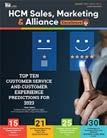
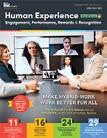
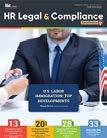
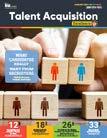
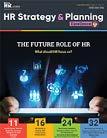

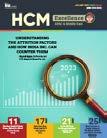
Publications 13 Targeted Publications to Reach Your Audience Informing, Educating, Enlightening and Assisting HR professionals in their personal and professional development, the Excellence series offers high-quality content through the publications! Like to submit an article? Use our online submission form or for more information go to www.hr.com/ExcellencePublications

For more information: Phone: 1.877.472.6648 | Email: ePubeditors@hr.com | www.HR.com/epubs Employee Learning & Development Excellence April 2023



























 Julie Winkle Giulioni
Julie Winkle Giulioni



 Author, Virtual /Live Keynote Presenter, Inc.’s Top 100 Leadership Speakers
Author, Virtual /Live Keynote Presenter, Inc.’s Top 100 Leadership Speakers





























 By Ciara Mullarkey, IDA Ireland
By Ciara Mullarkey, IDA Ireland




























